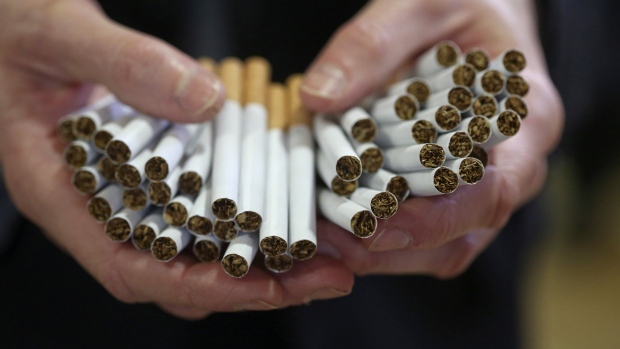Oct 12, 2018
Tobacco stocks drop on concern U.S. FDA plans strict new rules
, Bloomberg News

British American Tobacco Plc and Imperial Brands Plc led cigarette stocks lower on concern the U.S. Food and Drug Administration plans to propose strict limits on the amount of nicotine in traditional cigarettes.
Research shows that reducing the amount of nicotine in cigarettes by as much as 96 per cent would improve public health, Lynn Hull, a pharmacologist at the FDA’s Center for Tobacco Products, said Thursday in a webcast summary of recent studies on the matter. BAT fell as much as 5.4 per cent and Imperial declined as much as 7 per cent before paring some losses.
The lecture, preceded by a disclaimer that it doesn’t formally represent the FDA’s position, sparked speculation that tough measures may be on the way. The agency said in March it plans a proposal on nicotine reduction, though analysts say it will take years to implement.
“Making all cigarettes minimally addictive could significantly reduce the morbidity and mortality caused by smoking,” Hull said.
With an estimated 480,000 deaths due to smoking related causes each year in the U.S., FDA Commissioner Scott Gottlieb is developing a plan to change regulation over traditional cigarettes and new alternatives to smoking.
The presentation “demonstrates that the FDA is committed to building a body of evidence to support its nicotine reduction agenda,” Pamela Kaufman, a Morgan Stanley analyst, said in a note to clients. The next step is for the agency to publish its proposal, she said. Hull declined to comment in her presentation on when that might be.
Hull also summarized findings from a paper the Center for Tobacco Products published in the New England Journal of Medicine in March. Assuming nicotine limits are implemented in 2020, the study forecast the measures would prevent 33 million people from starting to smoke and 8 million deaths by 2100.
The new rules may increase the use of noncombustible nicotine alternatives after they’re implemented, but overall consumption should decline over time, Hull said. Studies also show that a sudden reduction in nicotine levels won’t lead smokers to compensate by smoking more, she added.
Both BAT, the maker of Lucky Strike cigarettes, and Imperial, which manufactures Winston, erased some of their early declines, with the former down 1.5 per cent at noon in London and the latter dropping 4.4 per cent.
Altria Group Inc. shares closed 2.9 per cent lower Thursday. The FDA webcast took place at noon New York time that day.
Some analysts said the presentation only repeated previous statements and summarized past studies.
“There is really nothing to see here,” wrote Owen Bennett, an analyst at Jefferies, who said that while some concern is understandable, the research doesn’t include any studies with independent data-gathering. The estimates of public health gains by 2100 were published in June, he added.
Cutting nicotine to the levels cited by Hull would require difficult, expensive genetic modification of tobacco plants, Bennett wrote. Still, some companies claim a big reduction is possible, including 22nd Century Group Inc., which is developing strains of tobacco with less nicotine.
Separately, Gottlieb and U.S. Secretary of Health and Human Services Alex Azar wrote in a Washington Post editorial that e-cigarettes shouldn’t be allowed to become a gateway to teenage addiction. Imperial Brands makes e-cigarettes in the U.S. under the Blu brand.

